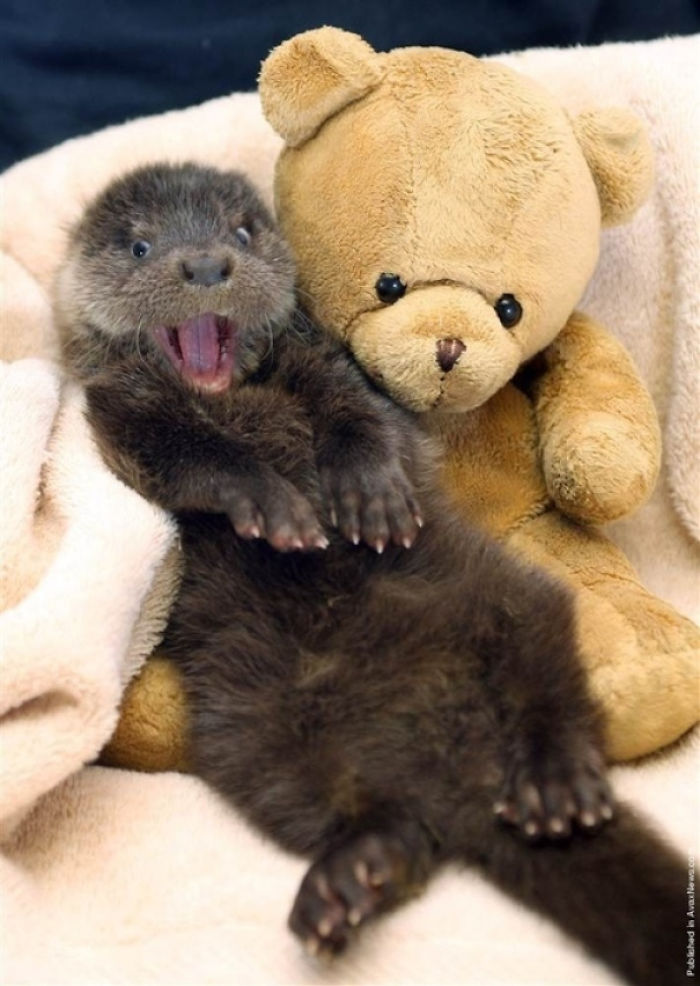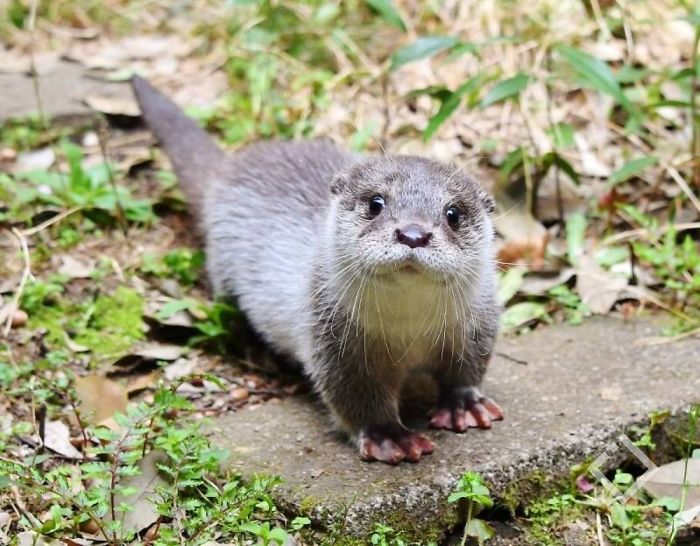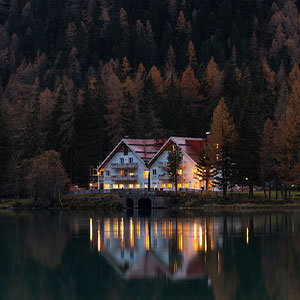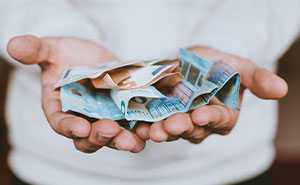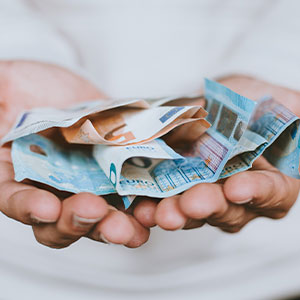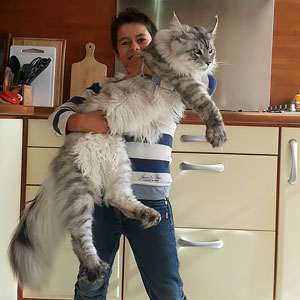Who doesn’t love watching baby sea otters holding hands, playing, and using each other’s tummies as rafts? Sea otters, which live in northern coastal areas of the Pacific Ocean, are iconically adorable animals, their charm makes them great mascots for environmental protection efforts, and their importance to their local ecosystems cannot be understated.
Sadly, sea otters are threatened by pollution, poaching, and commercial fishing, which sometimes leads to baby otters washing up to shore unattended. But thanks to the efforts of aquariums where people are able to care for them around the clock and teach these cute otters life skills, even baby animals that are orphans have a chance of making it to adulthood.
And we get lots of adorable baby sea otter pics along the way. Scroll down, have a look, and upvote the cute otter pictures you liked the most!
This post may include affiliate links.
Fun Facts about Baby Sea Otters
We know, we know, you’re practically dying to learn more about these incredibly cute baby otters, as are we! That’s why we’ve searched around the internet and found a couple of interesting facts about sea otters that might have the answers to your burning questions about these adorable creatures. For instance, what do otter do to their babies, why do the pups float around, and whether they truly use tools?
1. Otters are a part of the Mustelidae family. What does that mean? It means that the closest relatives of an otter are skunks, wolverines, badgers, and weasels! That makes otters the largest member of the weasel family, yet the smallest marine mammal in North America.
2. Most sea otters live in Alaska. And by most, we mean that 90% of the world's sea otter population! So, if you want to observe the precious baby sea otters in their natural habitat, you might as well start planning a trip to Alaska.
3. Every day, sea otters consume 25% of their body weight in food. Their diet consists mostly of sea urchins, crabs, mussels, and clams, for which sea otters always have a hand little stone around to crack them open.
5. Sea otters have the densest furs of any animal in the world! Each square inch of their fur contains 600,000 to 1,000,000 hair follicles (dogs, in comparison, have around 15,000 hair follicles per square inch). Otters, unlike most other marine animals, do not have a blubber layer. Instead, they rely on their dense, water-resistant fur to keep warm. Sea otters spend a substantial deal of their days grooming and maintaining their fur to keep warm. This traps heat and air near their skin.
6. Sea otters can have their pups at any time of the year. Once born, the otter pup needs constant attention from its mother for around half a year. Funnily enough, an otter pup’s fur is so dense that the baby cannot dive underwater until it gets its adult fur! Basically, sea otter babies just float around until their moms are foraging for food.
7. Kittens or pups? Both! Baby sea otters can be called both pups or kittens (kits for short) – whichever you like better. Although, if it were up to us, we’d just call them the most adorable fur babies ever.
8. Baby sea otters are tiny! At the time of birth, an otter pup weighs just around 3 to 5 pounds (1.3 to 2.2 kg). In comparison, a grown-up sea otter weighs around 30 to 100 pounds (14 to 45 kgs), so the pups have plenty of growing to do.
9. Being an otter mom is a tough job! Remember, baby otters can’t dive or swim properly because of their extremely dense fur, so the mom must take care of her babies thoroughly. And not only that - otter pups stay with their moms until they’re around a year old or until she has another litter.
10. Otters are champions in diving. The lung capacity of an otter is 2.5 times bigger than that of comparable-sized land mammals. Sea otters have been observed submerged for longer than 5 minutes at a time. River otters, on the other hand, have the ability to hold their breath for up to 8 minutes!
11. Otters are excellent with tools. In fact, they are one of the very few mammals that use them at all! A sea otter's preferred tool is a rock that can be used as a hammer or anvil to crack open hard-shelled prey. Have you ever wondered where otters hide their favorite pieces of equipment for safekeeping? They have a loose patch of skin beneath their armpit where they keep both the food they've foraged and the rock they use to crack it open.
12. A group of otters is called… A raft! Otters prefer to sleep in groups. Over 1,000 otters have been observed floating together by researchers. To keep from drifting apart, sea otters will wrap themselves in seaweed or hold hands, making something resembling a raft.
13. Although they look cute, sea otters are fierce wild animals. Otters are hunters and have very strong jaws equipped with sharp teeth. If you encounter a sea otter in the wild, keep a safe distance!
14. Sea otters love their babies and want others to love them, too. This might sound weird, but when in danger, sea otters show off their pups to the approaching predator. Why? It is thought that this way, the otters ask for compassion for their cute babies and them!
All in all, baby sea otters and their parents are very sociable, intelligent, and resourceful little sea mammals. It’s always interesting to watch their antics and the clever ways they go about. Hopefully, with an active conservation approach, the coasts of Alaska will see these joyful sea otter pups and their parents for as long as they want to stay there!
For now, though, you might want to continue scrolling through these cute otter pictures - we bet they’d make anyone’s day that much better!
Awwwwww!!!! This one comes with its' own "Caution Cone For Cuteness"! XD
That's not even pretending to be preparing the otter for a life back in the wild.
Note: this post originally had 78 images. It’s been shortened to the top 30 images based on user votes.
A lot of these pics don't look like they're taken in an aquarium/rehab centre that aims to release the baby otters back into the wild. If you are not an aquarium/rehab centre you have no business having an otter pup. One of the reasons they are becoming rare in the wild is their inherent cuteness and people thinking it's clever to have them as pets. It's not. Otter pups belong with their mothers/adoptive mothers and in the wild.
100% true. There are times when they can't be released back into the wild but otters should not be kept as pets. Let wild animals be wild wherever possible.
Load More Replies...This comes as no surprise. Everyone "otter" know how cute these critters are.
A lot of these pics don't look like they're taken in an aquarium/rehab centre that aims to release the baby otters back into the wild. If you are not an aquarium/rehab centre you have no business having an otter pup. One of the reasons they are becoming rare in the wild is their inherent cuteness and people thinking it's clever to have them as pets. It's not. Otter pups belong with their mothers/adoptive mothers and in the wild.
100% true. There are times when they can't be released back into the wild but otters should not be kept as pets. Let wild animals be wild wherever possible.
Load More Replies...This comes as no surprise. Everyone "otter" know how cute these critters are.




